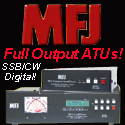4 reasons why we need more digital voice modes (not fewer)
Discussion in 'Amateur Radio News' started by KJ4RYP, Sep 12, 2014.
- Thread Status:
- Not open for further replies.
Page 3 of 5
Page 3 of 5
- Thread Status:
- Not open for further replies.










